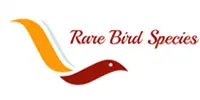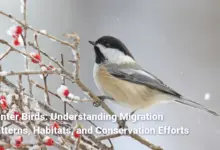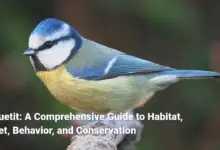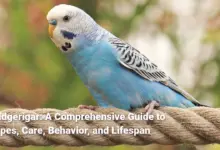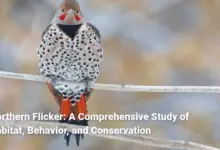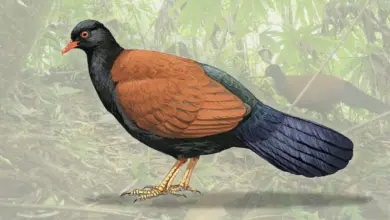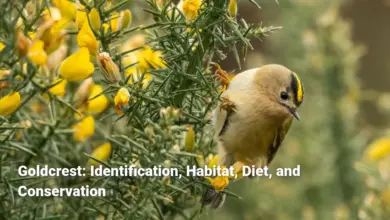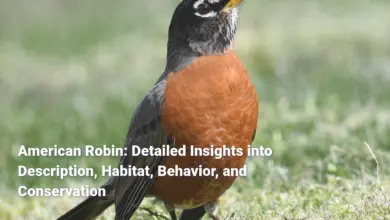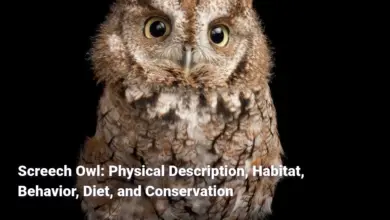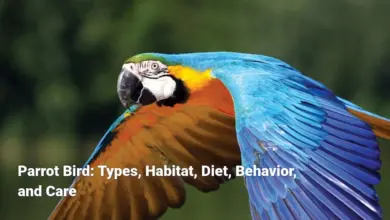Flamingo Bird: An In-Depth Exploration of Physical Characteristics, Habitats, Feeding Behavior, Reproduction, and Cultural Significance
A Comprehensive Guide to Flamingo Birds: Characteristics, Habitats, Feeding, Reproduction, and Cultural Impact
Flamingo Bird
Flamingo Birds are enchanting creatures that capture the imagination with their extraordinary beauty and unique behaviors. Renowned for their striking pink plumage and poised stances, these large wading birds have a captivating presence that draws people to them in both natural and artificial environments. Across various cultures, flamingos symbolize diversity, elegance, and grace, functioning as powerful representations in artworks and popular culture alike. Their distinctive appearance is matched by fascinating biological characteristics and behaviors that challenge the norms of avian life.
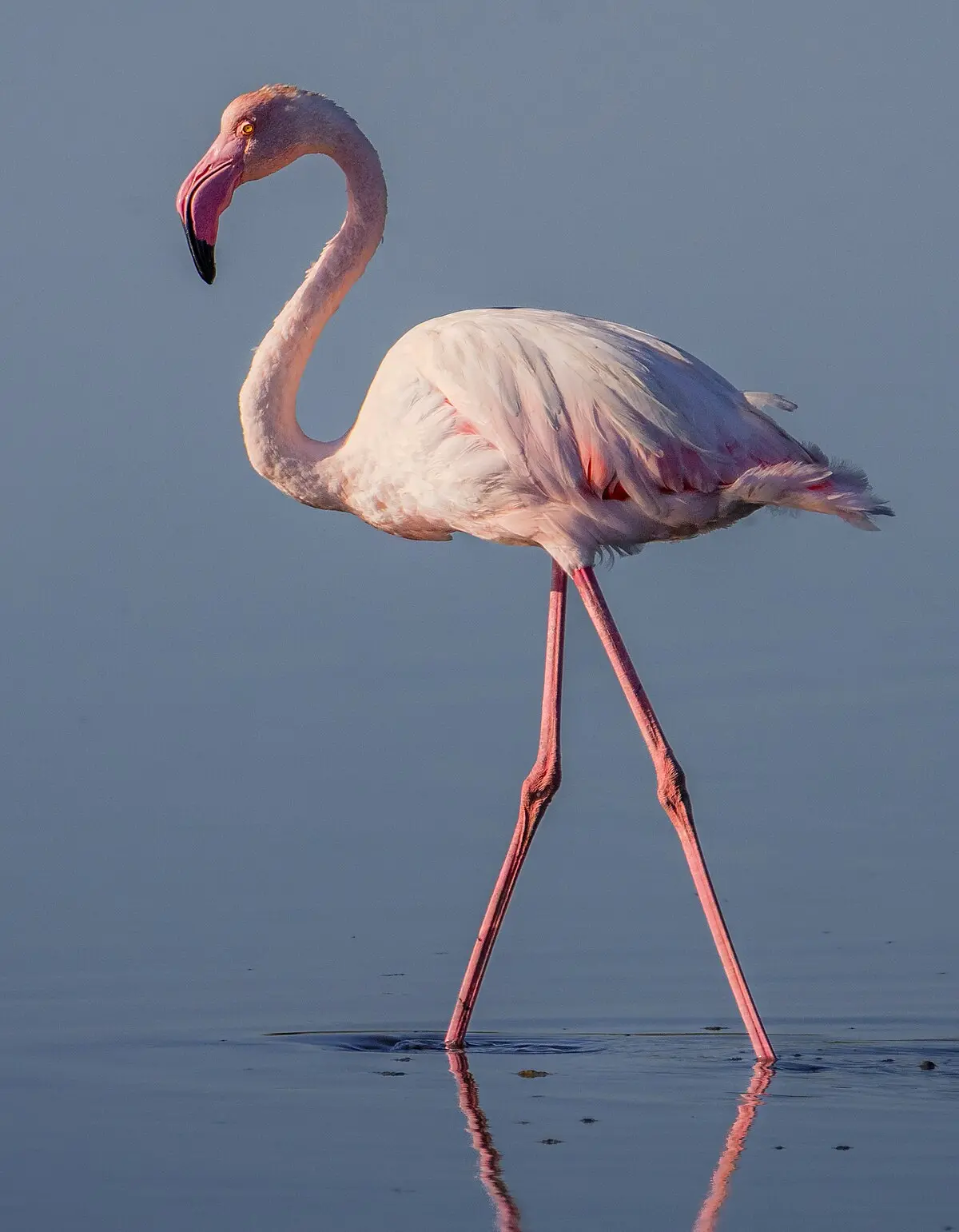
Flamingos inhabit diverse wetland habitats around the globe, primarily thriving in shallow, brackish waters where they engage in feeding, breeding, and socializing. Their living environments serve as the backdrop for mesmerizing courtship rituals and vibrant communal life. This in-depth exploration of flamingos will delve into their physical traits, feeding behaviors, reproductive habits, social structures, and the cultural significance they hold in human society. By understanding the complexities and nuances surrounding these beautiful birds, we can better appreciate their role in our ecosystem and acknowledge the need for ongoing conservation efforts to protect their habitats and populations.
Physical characteristics of Flamingo Bird
Flamingos are characterized by several unique physical traits that contribute to their iconic appearance. Standing tall and elegant, these birds showcase a variety of features that are fascinating to observe.
- Size and Weight: Flamingos come in different sizes, with the greater flamingo being the tallest. It can reach heights between 120 to 150 cm (47-59 inches) and weigh up to 3.5 kg (7.7 lbs). In contrast, the lesser flamingo is the smallest species, standing at about 80 cm (31.5 inches) and weighing around 2.5 kg (5.5 lbs). This size variation allows flamingos to adapt to diverse habitats and food sources.
- Legs and Feet: Equipped with long, stilt-like legs, flamingos can wade through deeper waters in search of food. Their leg lengths range from 80 to 125 cm (31.5-49 inches), and they possess a hallux or hind toe with webbed feet that enhances their swimming and foraging abilities.
- Neck and Head: The long neck of a flamingo is composed of 19 elongated cervical vertebrae, lending remarkable flexibility. They have a distinctive hooked bill that is expertly adapted for filter feeding. The unique configuration allows them to feed with their bills upside down, efficiently siphoning food like algae and crustaceans from the water.
- Wings and Flight: Flamingos exhibit strong, large wings that vary in size by species. The lesser flamingo has a wingspan of about 95 to 100 cm (37-39 inches), while the greater flamingo boasts a wingspan between 140 to 165 cm (55-65 inches). Their striking black flight feathers add to their visually stunning aesthetic. When they fly, flamingos display graceful patterns, forming V-shaped formations that symbolize unity and synchronicity.
Flamingos are alluring birds that thrive in various ecosystems, showcasing impressive adaptations that make them an integral part of their habitats.
Unique coloration of Flamingo Bird
The vibrant coloration of flamingos is one of their most captivating features, reminiscent of sunsets reflecting on water or blooming flowers in a garden. This unique coloration results from dietary factors and plays a significant role in their identity.
- Feather Color: Flamingo feathers can range from pale pink to brilliant crimson or vermilion, showcasing the dazzling effects of their diet. The American flamingo, for instance, is renowned for being the brightest among all species, its luscious tones symbolizing health and vitality. The hues are largely derived from carotenoids, pigments found in the algae and crustaceans they consume.
- Juvenile Coloration: Young flamingos hatch with gray or white plumage, a reminder of the transformative journey they embark on as they mature. Over one to two years, juvenile flamingos gradually develop their adult coloration due to an increase in carotenoids in their diet. This slow change emphasizes the relationship between nutrition and appearance, showcasing how nature intricately connects these aspects.
- Health and Color Brightness: The intensity of a flamingo’s color serves as an indicator of its health. In the wild, alongside a vibrant plumage, flamingos that display a richer hue often stand out as the fittest individuals, having access to superior dietary resources. This contrast becomes apparent in captivity, where inconsistent diets may alter feather coloration irrespective of an individual’s health status.
- Molting: Adult flamingos undergo a molting process once or twice a year, shedding and regenerating their feathers. During this time, their coloration may temporarily lose its vibrancy but eventually returns to its captivating state. The molting process signifies the dynamic nature of their appearance, encapsulating the idea of change and renewal inherent in the natural world.
The remarkable coloration of flamingos is a product of their diet and habitat, allowing them to stand out in their environments. It serves not only as a visual delight but also as a marker of health and identity within flocks.
Beak adaptations in Flamingo Bird
Flamingos possess remarkable beak adaptations that significantly influence their feeding habits and lifestyle. The unique configuration of their bills allows them to thrive in specialized ecological niches.
- Structure and Function: Flamingos possess thick, downturned bills that aid in filter feeding, primarily characterized by an upper mandible that is slender and flat, and a larger, trough-shaped lower mandible. This specialized shape supports their ability to extract food items effectively from water. The unique design means flamingos employ a distinctive feeding style keeping their bills submerged and oriented upside down to access detritus and microorganisms at the water’s surface.
- Lamellae Mechanics: Inside their bills, flamingos feature lamellae comblike structures that allow for effective filtration of food. When they close their bills, the lamellae mesh together, creating a net that retains food particles while expelling excess water. This adaptation enables flamingos to consume microscopic algae and tiny crustaceans efficiently, showcasing a clever evolutionary strategy for foraging.
- Feeding Techniques: Flamingos utilize several techniques to gather food. In addition to submersible feeding, they may also engage in foot-stirring behaviors, using their long legs to disturb sediment at the bottom of shallow waters. This strategic maneuver enhances their access to food sources, making feedings more efficient.
- Behavioral Adaptations Related to Beak Structure: The unique design of the flamingo’s bill also plays a role in social interactions, particularly during courtship displays. Males exhibit their distinctive bills and engage in synchronized movements, showcasing their physical attributes to attract mates. These behavioral connections underline the importance of beak adaptations not only as functional tools but also as communicative features within social dynamics.
Flamingos stand out due to their specialized beaks uniquely adapted for their feeding lifestyle, emphasizing the intricate relationships between form, function, and environmental demands.
Wingspan and flight patterns
Flamingos are not only captivating to observe on the ground, but their majestic flight patterns also reveal their gracefulness in the air. Their wingspan serves as one of the indicators of the different species, showcasing adaptability and aerial prowess.
- Size Variation in Wingspan: The wingspan of flamingos varies depending on their species. Lesser flamingos typically have a wingspan ranging from 95 to 100 cm (37-39 in.), while the greater flamingo exhibits a larger wingspan, measuring between 140 to 165 cm (55-65 in.). Caribbean flamingos boast a slightly different wingspan, approximately 150 cm (59 in.). These variations impact their flight styles and aerodynamics, emphasizing how size and morphology contribute to their survival in diverse environments.
- Flight Patterns: Flamingos are known for their distinctive flight patterns, often creating beautiful displays as they glide across the sky. They typically fly in V-shaped formations, a behavior that maximizes wind resistance and reduces fatigue during long migrations. This communal style of flying reflects a deep-seated instinct for social animals, reinforcing their social bonds as they journey through the air together.
- Flight Speed: Flamingos can reach speeds ranging from 50 to 60 kph (31 to 37 mph) during flight, enabling them to cover considerable distances as they migrate. It’s noted that they can travel between 500 and 600 km (311 to 373 miles) in a single night, showcasing remarkable endurance and adaptability that allows them to find suitable habitats for feeding and breeding.
- Migration Behaviors: Migration is often influenced by food availability and environmental conditions. Flamingos may relocate to find favorable habitats during the breeding season. The ability to identify changing conditions and navigate across expansive distances highlights the birds’ remarkable instinctual behaviors, allowing them to thrive in numerous regions.
Flamingos’ flight patterns and wing adaptations exemplify their agility and resilience. Their ability to soar across landscapes serves as a testament to their evolutionary history and their esteemed place in the avian world.
Habitats of Flamingo Bird
Flamingos predominantly thrive in a variety of wetland environments that are critical to their survival and reproductive success. Their habitats are rich in food sources and provide the ideal conditions for breeding activities, making their ecological preferences essential to understanding their behavior.
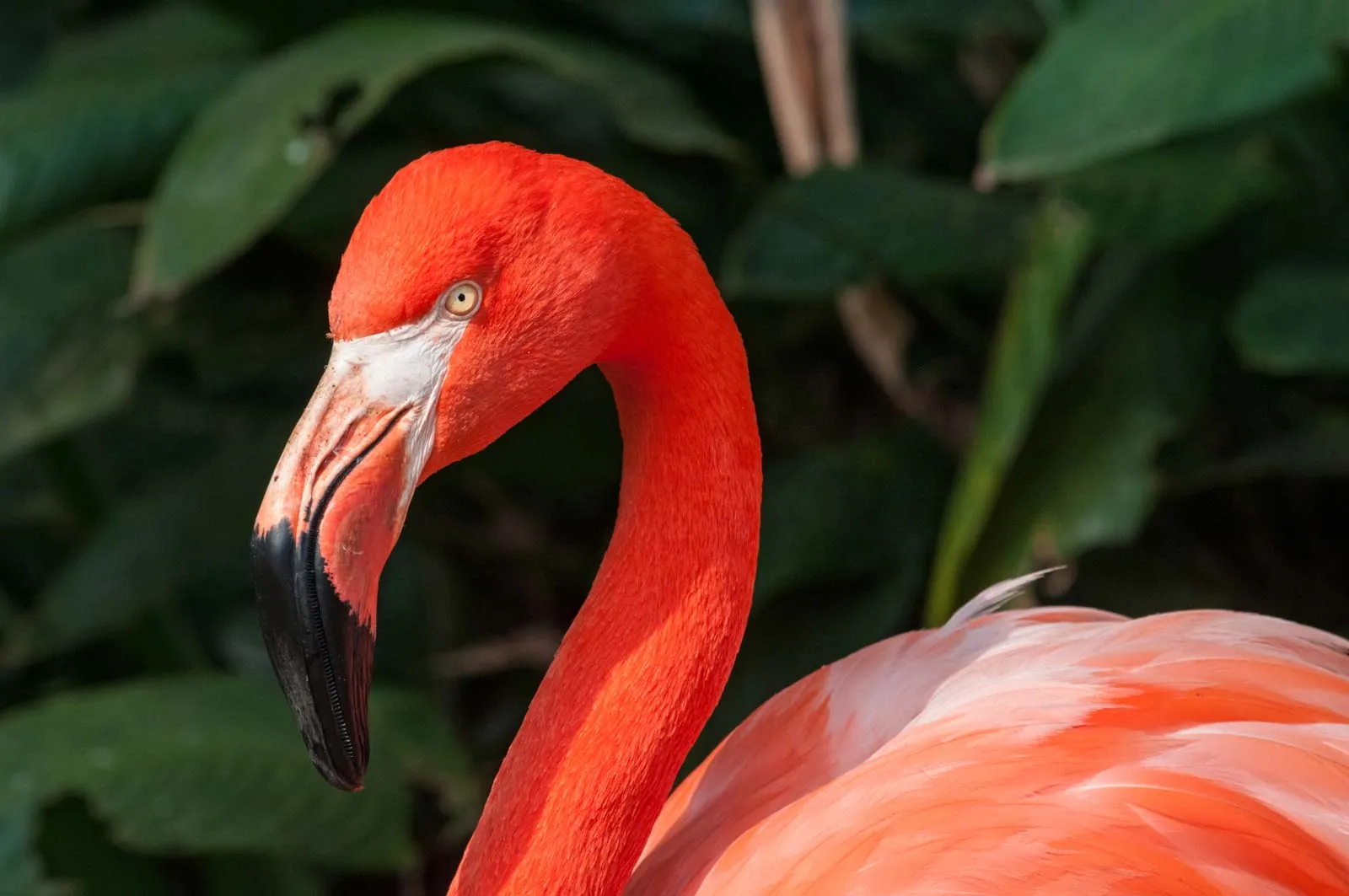
- Wetland Types: These iconic birds primarily inhabit various types of wetlands, including salt flats, brackish lagoons, alkaline lakes, and estuaries. The significant salinity levels of these environments play a crucial role in supporting their food sources, enriched with nutrients that sustain their populations. The muddy bottoms of these habitats enable them to filter-feed effectively, consuming algae, invertebrates, and crustaceans.
- Geographical Distribution: Flamingos are found across a wide range of regions, with three species particularly prominent in South America. The Chilean flamingo (Phoenicopterus chilensis) is the most widespread in the southern cone, while the Andean flamingo (Phoenicoparrus andinus) and Puna flamingo (P. jamesi) prefer the high-altitude wetlands in Argentina, Bolivia, Chile, and Peru. Notably, during winter months, these higher-altitude species may also utilize lowland wetlands when conditions become less sustainable.
- Environmental Changes and Threats: The habitats that flamingos depend on are increasingly vulnerable to anthropogenic pressures. Factors such as agricultural expansion, urban development, and mining activities can lead to habitat degradation and loss, which severely impacts the availability of their crucial feeding and nesting sites. Understanding the interplay between human activity and flamingo habitats is vital for conservation efforts.
- Conservation Strategies: To ensure the sustainability of flamingo populations, effective conservation strategies must include collaborative efforts involving governmental and non-governmental organizations. This involves monitoring their populations, studying their habitat use patterns, and protecting critical breeding sites against degradation. Communicating the significance of these wetlands to local communities can create awareness and foster conservation efforts aimed at maintaining the health of these ecosystems.
In summary, flamingos occupy essential wetland habitats vital for their feeding, breeding, and social activities. Understanding the ecological connections between flamingos and their environments is critical to fostering conservation efforts and ensuring the survival of these magnificent birds.
Preferred wetland environments
Flamingos favor wetlands that provide specific conditions essential for their survival and reproductive success. These environments serve as rich ecosystems for feeding, nesting, and socializing.
- Shallow Waters: Flamingos thrive in shallow waters where they can easily filter feed using their specialized beaks. These conditions provide access to algae, crustaceans, and other microorganisms that comprise their diet. Whether in coastal areas or inland lakes, the availability of shallow waters is crucial for flamingo populations.
- Brackish Lagoons: These birds prefer brackish lagoons due to the high nutrient levels from freshwater and saltwater mixing, creating optimal conditions for the growth of aquatic plants and invertebrates. The intricate balance of salinity supports their food web, influencing their breeding success.
- Alkaline Lakes: Alkaline lakes, often found in arid and semi-arid regions, serve as significant habitats for flamingos. The unique chemistry of these lakes fosters the growth of specific algae types that flamingos rely on for their nutrition. These environments are often less disturbed by human activity, providing safe havens for breeding.
- Nest Protection: Additionally, flamingos favor secluded areas within wetlands to nest, providing natural barriers against potential predators. The construction of raised nests using mud and vegetation protects their eggs from flooding and assists in maintaining the necessary humidity levels for incubation.
In conclusion, the preferred wetland environments of flamingos play a pivotal role in their survival, enabling effective feeding and successful breeding. Preserving these ecosystems is vital for ensuring the health and longevity of flamingo populations across the globe.
Breeding sites of Flamingo Bird
Flamingos typically breed in specific environments that offer advantageous conditions for nesting and raising their young. Their choice of breeding sites is heavily influenced by the availability of food, water levels, and protection from predators.
- East African Breeding Locations: Notable breeding sites for flamingos include the alkaline lakes situated within the East African Rift Valley, such as Lake Nakuru in Kenya and Lake Natron in Tanzania. These lakes, enriched with brine flies and other invertebrates, create the ideal conditions for breeding. Their high salinity levels also deter potential predators, ensuring the safety of breeding flamingos.
- Botswana’s Makgadikgadi Pans: This region transforms into a crucial breeding ground during the wet season, when the salt pans fill with water, attracting vast numbers of flamingos for nesting. The ephemeral nature of these wetlands becomes critical for their reproductive cycle, with flamingos often returning to the same sites year after year.
- Chilean Wetlands: The Lagoa do Peixe National Park in Brazil represents a significant habitat for Chilean flamingos (Phoenicopterus chilensis), offering safe breeding sites year-round. The availability of food resources, coupled with the right water conditions, ensures the ongoing presence of these flamingos in the region.
- European Breeding Grounds: In Europe, the Camargue region of France serves as a vital breeding ground for the Greater Flamingo (Phoenicopterus roseus). The extensive marshlands provide an optimal environment for nesting, while the rich biodiversity in these wetlands supports the timely growth of food sources for chick development.
Understanding these breeding sites highlights the essential ecological factors influencing flamingo populations. Protecting these areas will ensure that flamingos continue to thrive and reproduce in the wild.
Seasonal migration patterns of Flamingo Bird
Flamingos are known for their unique migratory behaviors, often roaming vast distances in search of suitable habitats. Their movement patterns are influenced by environmental conditions, highlighting their adaptability to changing circumstances.
- Response to Environmental Changes: Flamingos migrate primarily due to changes in food availability and water levels. For instance, during dry spells, breeding sites may become less hospitable, prompting flamingos to relocate to areas with abundant resources. Their migratory instincts behave as a survival strategy, allowing them to thrive in diverse habitats.
- Breeding Season Movements: Many flamingos tend to migrate toward breeding areas in the spring, especially in regions like Africa and Europe, following the onset of the rainy season. They often return to these breeding sites in the fall, but the timing may vary from year to year depending on climatic factors.
- Differing Species Habits: Various flamingo species exhibit different migratory habits. For example, Greater Flamingos can travel distances of up to 3000 miles based on environmental contexts, while American Flamingos predominantly perform shorter migrations, traveling several hundred miles. This geographic variation allows different species to adapt to their unique habitats effectively.
- Long-Distance Flight: Flamingos have remarkable endurance, allowing them to fly for extensive periods. They can cover hundreds of miles in a single flight, often utilizing favorable winds to enhance their journey. This behavior underscores their resilience and adaptability in the face of changing environmental conditions.
The seasonal migration patterns of flamingos exhibit their ability to respond to ecological changes, showcasing their resilience and adaptability in pursuit of optimal habitats. Understanding these patterns offers insights into their social dynamics and interaction with the environment.
Feeding behavior of Flamingo Bird
Flamingos possess exceptional feeding behavior, prominently characterized by their filter-feeding technique. Their adaptations allow them to thrive on tiny organisms found in aquatic environments, emphasizing their unique ecological niche.
- Filter Feeding Technique: Flamingos are renowned for their ability to filter-feed, allowing them to extract nutrients using their specialized beaks. Their feeding involves positioning the bill upside down in the water, where they suck in a mix of water and mud. The lamellae inside their bills enable them to filter out food particles, including algae and small crustaceans, while expelling excess water.
- Social Foraging Behavior: Flamingos are known to forage in large groups, enhancing their chances of locating food sources. By engaging in group feeding, they can disturb a larger area of sediment, making food resources more accessible. This behavior underscores their social nature, as they rely on one another during foraging endeavors.
- Foot-Stirring Techniques: In addition to filtering, flamingos often use foot-stirring techniques to access food buried in the mud. By rhythmically stamping their feet, they disturb the bottom substrate, which allows them to uncover hidden food sources. This behavior showcases their adaptability to different feeding strategies based on the local environment.
- Diet Composition: The diet of flamingos consists primarily of algae, small crustaceans, diatoms, and various microorganisms. The presence of carotenoid pigments in their food sources contributes to their characteristic pink or reddish coloration. Each flamingo typically requires substantial quantities of food daily, with estimates suggesting around 270 grams (9.5 ounces) of food consumption is necessary to meet their nutritional needs.
Flamingos have evolved distinct feeding behaviors that allow them to thrive in unique ecosystems. Their filter-feeding techniques not only ensure their survival but also underscore the intricacies of their roles within the broader ecological context.
Diet composition of Flamingo Bird
Flamingos possess a diverse and specialized diet composed of various food sources that are critical for their health and vibrant coloration. Understanding this diet reveals much about their ecological role and adaptive strategies.
- Primary Food Sources: The bulk of the flamingo diet consists of small organisms found in aquatic environments. This includes a range of items, such as:
- Algae: Various species of blue-green and red algae serve as a staple in their diet, providing essential nutrients and contributing to their pink coloration due to the presence of carotenoid pigments.
- Small Crustaceans: Brine shrimp and copepods are vital food sources that not only supply protein but also enhance feather coloration. These small creatures are abundant in the shallow waters where flamingos thrive.
- Diatoms: These microscopic algae are rich in nutrients and form an essential component of a flamingo’s diet, supporting their overall health and energy needs.
- Foraging Variability: The flamingo’s diet can vary based on local environmental conditions and food availability. During certain seasons, they may shift their feeding focus depending on which food items are most prevalent. For instance, if algal blooms decline, flamingos may turn to more invertebrates that reside in their habitats.
- Nutritional Requirements: Flamingos require substantial amounts of food daily, estimated at around 270 grams (9.5 ounces). This nutritional intake is crucial for maintaining their robustness and health, especially during breeding seasons when energy demands are heightened.
- Adaptations to Diet: The structure of a flamingo’s bill is intricately adapted to facilitate their specific dietary habits. Each aspect of their feeding behavior from the way they filter-feed to their group foraging strategies illustrates their unique adaptations that allow them to exploit nutritional resources efficiently.
Ultimately, the diet of flamingos is intricately tied to their health, coloration, and ecological adaptation. Understanding their food sources sheds light on the ecological niches they occupy and underscores the importance of conserving their habitats to ensure ongoing access to these vital resources.
Feeding techniques of Flamingo Bird
Flamingos exhibit fascinating feeding techniques that illustrate their remarkable adaptations to their aquatic environments. Their methods emphasize their unique ecological role and innovative approaches to foraging.
- Filter-Feeding Dynamics: Flamingos are primarily filter feeders, possessing specialized bills that enable them to extract small particles from the water. They utilize a feeding technique where they tilt their heads upside down in shallow waters, sucking in a mixture of mud and water. When they do this, their lamellae engage to filter out tiny organisms, allowing them to retain nutritious morsels while expelling excess water back into the environment.
- Rapid Tongue Movement: An essential aspect of their feeding technique is the quick movement of their tongues. Flamingos can pump their tongues up to four times per second within their bills, which aids in drawing water in and pushing it out, effectively trapping food particles. This rapid action enhances their ability to feed efficiently and ensures they can gather enough nutrients to sustain themselves.
- Grouping Behavior: Flamingos often forage in large groups, which not only reinforces their social behaviors but also amplifies their feeding efficiency. Working together, they can cover larger areas of the substrate, increasing the likelihood of uncovering hidden food sources. This social feeding behavior highlights the importance of collaboration in their ecological strategies.
- Foot-Stirring Techniques: In addition to filter feeding, flamingos employ foot-stirring techniques to enhance their foraging. When they stamp their feet in the water, they can disturb sediment and sediment-dwelling organisms, making it easier to access food sources. This adaptive behavior underscores their ability to modify their feeding strategies based on the conditions of their environment.
By employing a range of feeding techniques, flamingos excel in extracting nutrients from their habitats. Their unique adaptations allow them to thrive in dynamic environments, ensuring their continued presence in various regions around the globe.
Role of filter feeding in Flamingo Bird diet
Filter feeding is a critical behavior that defines not only the diet of flamingos but also their ecological role within wetlands and aquatic ecosystems. This remarkable feeding method uniquely influences their health, coloration, and environmental interactions.
- Nutritional Intake: Flamingos rely on filter feeding to access a varied diet composed of algae, microorganisms, and small aquatic organisms. This method enables them to extract significant amounts of food from their habitats, ensuring they meet their dietary requirements. The availability of these nutrients is crucial for maintaining their health, especially during breeding seasons when energetic demands peak.
- Ecological Impact: As filter feeders, flamingos help regulate the populations of algae and invertebrates within their habitats. This feeding behavior contributes to the overall health of the wetland ecosystem by preventing algal blooms that could otherwise disrupt the ecological balance. By controlling the abundance of these organisms, flamingos play a vital role in maintaining their environments.
- Coloration and Identity: The pigments obtained through filter feeding, particularly carotenoids from algae and crustaceans, are essential to their vibrant pink coloration. The intensity of their plumage directly relates to their dietary intake; thus, filter feeding becomes a determining factor not only for their health but also for their visibility and social dynamics within flamingo colonies.
- Social Structures and Behavior: Filter feeding is often a communal effort among flamingo groups, underscoring their social structures. As they forage together, flamingos strengthen their social bonds, which facilitate cooperative behavior during nesting and predator vigilance. The intricate relationship between filter feeding and social interactions illustrates the complexity of flamingo life.
In summary, filter feeding serves multiple roles within the context of flamingo diets, influencing their health, ecological impacts, and social behaviors. Understanding this feeding method adds to the appreciation of flamingos as key players in their ecosystems and highlights the need for conservation efforts aimed at preserving their habitats.
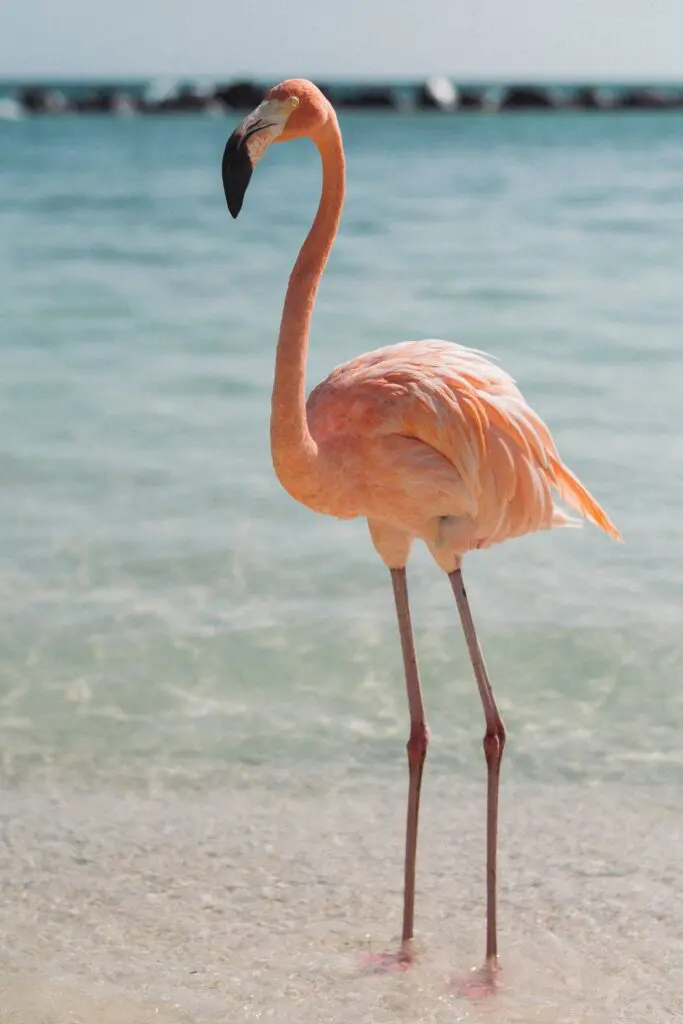
Reproductive habits of Flamingo Bird
Flamingos exhibit intricate reproductive habits that encompass courtship, nesting, and chick-rearing behaviors. Their unique approaches to mating and social dynamics play a vital role in ensuring the survival of their species.
- Mating and Pair Bonding: Flamingos typically reach sexual maturity at around six years of age. During the courtship process, males gather to display ritualized stretching and vocalizations to attract potential mates. These synchronized movements form the basis of strong pair bonds, and while flamingos engage in serial monogamy, they may mate with the same partner for several breeding seasons.
- Nesting Practices: Flamingos are known for their communal nesting behavior, often constructing nests in large colonies that can number in the thousands. This collective approach creates protection from predators, allowing for increased survival rates. Nests are built using materials such as mud, stones, and vegetation, forming mounds that elevate eggs above the water’s surface to mitigate flooding risks.
- Egg Laying and Incubation: Each breeding pair typically lays one egg per season, which is incubated collaboratively by both parents for approximately 27 to 31 days. This cooperative incubation ensures stability and dedicated care for the developing embryo, reflecting the importance of parental participation in chick development.
- Chick Development and Rearing: Upon hatching, flamingo chicks are covered in gray down feathers, entering a communal environment known as a crèche. Here, chicks are protected while learning vital social and survival skills. Parents contribute by providing a nutrient-rich crop milk until the young can forage independently.
The reproductive habits of flamingos highlight their adaptability and social structures, enabling them to thrive in dynamic environments. The combination of courtship rituals, communal nesting, and cooperative care significantly enhances their reproductive success and exemplifies their unique ecological adaptations.
Nesting practices in Flamingo Bird
Flamingos demonstrate unique nesting practices that play a vital role in their reproductive success. Nesting behavior is intricately connected to their social structures, environmental conditions, and adaptive strategies.
- Communal Nesting: Flamingos typically nest in large colonies, creating a bustling social environment that fosters a sense of security. This communal approach allows for the sharing of responsibilities, offering protection against predators while facilitating cooperation among the birds. Nesting in high density reduces the risk of individual predation, enabling greater survival rates for the young.
- Nest Construction: The construction of flamingo nests is a collaborative effort between male and female partners, utilizing materials such as mud, stones, and plant matter. Each pair works together to build a mound, ensuring that the nest is sufficiently elevated to safeguard the eggs from flooding during rising water levels. Nests can be several inches high, forming shallow depressions to accommodate egg placement.
- Timing of Nesting: The timing of nest building is influenced by environmental factors, particularly rainfall. Flamingos often begin constructing nests weeks in advance of egg-laying, ensuring that they are sufficiently prepared for the breeding season. Successful nesting is closely tied to favorable conditions that support food availability for chicks once they hatch.
- Egg Laying and Incubation: Flamingos typically lay one egg, which is incubated cooperatively by both parents. The collaborative nature of this incubation serves to maintain optimal temperature and humidity levels, ensuring the survival of the developing embryo. Parental vigilance during this phase guarantees protection from external threats, showcasing their commitment to successful reproduction.
Nesting practices exemplify the social intricacies of flamingos, emphasizing the critical role of communal behaviors in enhancing reproductive success. By ensuring the safety and viability of their nests, flamingos demonstrate their adaptability and resilience within challenging environments.
Incubation periods and chick rearing
The incubation and chick-rearing processes are crucial stages in the reproductive cycle of flamingos, reflecting their commitment to nurturing the next generation. These phases are characterized by collaboration between parents and social dynamics within breeding colonies.
- Incubation Duration: Flamingos typically lay a single egg with a chalky white appearance, which requires a cooperative incubation period lasting approximately 27 to 31 days. Both parents share the responsibilities of incubating the egg, ensuring consistent temperature and humidity levels to promote embryo development. This shared effort reflects the strong partnership formed between mates.
- Chick Development: Once the egg hatches, the chick emerges covered in soft gray down feathers, signaling the beginning of a new life. Flamingo chicks require immediate protection and nourishment, prompting parents to feed them a highly nutritious crop milk produced in their digestive systems. This initial feeding phase is critical for their growth and survival.
- Learning and Socialization: As chicks grow, they gather in crèches, allowing them to socialize and develop essential survival skills. Within these communal groups, flamingo chicks learn to forage, communicate, and integrate into the social structure of their species. The presence of adult flamingos provides guidance and protection, enhancing the overall survival rate of the young.
- Transition to Independence: As flamingo chicks mature, they gradually transition from relying on parental care to foraging independently. This period is marked by significant growth, during which they develop the necessary skills to thrive in their environments. Parental involvement diminishes, allowing them to explore and adapt to their surroundings while still benefiting from the social network present in crèches.
Flamingos showcase a dedicated approach to incubation and chick-rearing, emphasizing the importance of parental collaboration and social environments in ensuring the survival of their offspring. These processes reflect their adaptability and commitment to protecting future generations.
Social structures during breeding
Flamingos exhibit intricate social structures during the breeding season, characterized by strong pair bonds and cooperative behaviors. These dynamics play a fundamental role in their reproductive success.
- Courtship Displays: Mating rituals are a central aspect of flamingo social behavior. Males engage in elaborate courtship displays, showcasing synchronized movements and vocalizations to attract females. This process involves rhythmic stretching, head shaking, and coordinated movements, creating impressive visual spectacles that highlight the beauty and grace of these birds.
- Pair Bond Formation: Once a pair is formed, flamingos often maintain a strong bond over multiple breeding seasons. Serial monogamy allows for the establishment of stable partnerships, enhancing the likelihood of successful reproduction. This loyalty reflects their social dynamics and cooperative breeding strategies.
- Communal Nesting Dynamics: The breeding season sees flamingos nesting in large colonies, fostering a protective environment. Breeding in groups provides safety in numbers, reducing individual predation risk. This communal approach to nesting promotes a sense of security and increases the collective success rates of breeding flamingos.
- Chick Rearing and Social Learning: Social structures during breeding extend to chick rearing, where families form crèches that provide protection and enhance social learning. The presence of adult flamingos helps guide and supervise the young, reinforcing social bonds within colony structures. In these crèches, chicks learn essential survival skills and develop critical social interactions, which are fundamental to their integration into flamingo society.
In summary, flamingos exhibit intricate social dynamics during the breeding season, characterized by courtship displays, strong pair bonds, communal nesting, and collaborative chick-rearing. These social structures play an essential role in ensuring the survival of their species and highlight the importance of cooperation within this iconic bird’s life.
Cultural significance of Flamingo Bird
Flamingos hold substantial cultural significance across various societies, symbolizing beauty, harmony, and transformation. Their stunning appearance and unique characteristics have positioned them as powerful representations in art, mythology, and contemporary culture.
- Symbol of Beauty in Art: Throughout history, flamingos have been depicted in various art forms, from ancient mosaics to modern paintings. In ancient Egypt, for example, flamingos were associated with the sun god Ra and often represented rebirth and resurrection. These birds served as symbols of beauty and grace in several artistic expressions, captivating the imaginations of artists and viewers alike.
- Representations in Mythology: Flamingos have mystical associations in various cultures. In Native American traditions, they signify balance, cooperation, and community. Meanwhile, in Hindu culture, flamingos are linked to the goddess Saraswati, representing wisdom and purity. The bird’s long neck symbolizes maintaining strong family and community relationships, infusing cultural narratives with deeper meanings.
- Modern Cultural Icons: In contemporary society, flamingos have transformed into symbols of extravagance and fun, often appearing in eclectic designs, from lawn ornaments to popular fashion trends. The introduction of plastic flamingo lawn ornaments in the 1950s epitomized this transformation, highlighting their role as kitschy cultural icons that evoke nostalgia and playfulness in suburban settings.
- Environmental Awareness: As cultural symbols, flamingos are increasingly used in campaigns promoting awareness about conservation and habitat protection. Their striking presence in various media fosters interest in environmental issues, prompting discussions about the essential need to protect their habitats and ensure the survival of these captivating birds.
In essence, flamingos serve as rich cultural symbols, embodying beauty, transformation, and community. Their presence in mythology, art, and contemporary society reflects the intricate connections between nature, culture, and the human experience.
Representation of Flamingo Bird in art
Flamingos have long captured the attention of artists due to their striking beauty and elegance. Their representation in art transcends cultures and eras, showcasing various interpretations and symbolic meanings.
- Historical Art: In ancient times, flamingos were depicted in Egyptian art, symbolizing the sun and resurrection. They often appeared in frescoes, pottery, and sculptures, representing the beauty of nature and the importance of birds in the ecosystem. Egyptian artists emphasized their vibrant colors and graceful forms, making flamingos a staple subject in ancient artworks.
- Renaissance and Baroque Influences: During the Renaissance, flamingos garnered attention in artworks by European masters. Their exotic beauty was often incorporated into elaborate tapestries, paintings, and decorative objects. The use of flamingos in these artworks symbolized abundance and opulence, reflecting the fascination with nature prevalent in that era.
- Modern Art Movements: In the contemporary art scene, flamingos have been reinterpreted by artists who focus on themes related to fragility, joy, and transformation. Artists utilize flamingo imagery to evoke emotional responses that resonate with audiences, incorporating them into various mediums such as photography, printmaking, and sculpture.
- Kitsch and Pop Art: The iconic plastic flamingo lawn ornaments introduced in the 1950s have become cultural symbols of kitsch. Artists have embraced this form, transforming it into playful and humorous critiques of consumerism and suburban life. The juxtaposition of flamingos with everyday objects highlights the absurdity and charm of their existence in modern culture.
The representation of flamingos in art showcases their enduring allure and cultural significance. They serve as a bridge between nature and human expression, embodying themes of beauty, transformation, and nostalgia.
Flamingo Bird in popular culture
Flamingos are not just limited to the realms of art and history; they play a substantial role in popular culture, symbolizing extravagance and leisure. Their captivating shape and vibrant colors have made them a recurring motif in various aspects of contemporary life.
- Cultural Iconography: Flamingos have become cultural icons, representing a carefree lifestyle characterized by leisure and enjoyment. They feature prominently in movies, television shows, and advertising campaigns, often associated with luxurious vacations and vibrant tropical settings. From Miami Vice to flocks of plastic flamingos adorning lawns, their presence signifies escapism and lightheartedness.
- Fashion Statements: In fashion, flamingos are often featured in clothing designs, accessories, and prints. Their playful aesthetic has been embraced by designers aiming to evoke feelings of cheerfulness and summer vibes. Such motifs appear in swimwear, summer attire, and luggage, further enhancing their status as symbols of fun.
- Marketing and Merchandise: Flamingos are prevalent in the world of marketing, appearing on various merchandise ranging from kitchenware to home decor. Their whimsical decor appeals to consumers seeking to add a touch of vibrant charm to their spaces. Additionally, products featuring flamingo imagery, such as beach towels, cocktails glasses, and garden decorations, are often marketed to evoke a sense of relaxation and enjoyment.
- Social Media and Pop Culture References: In the digital age, flamingos have gained popularity on social media platforms, becoming part of trending hashtags and challenges. Their playful imagery often accompanies summer-themed posts, vacation snapshots, and humorous memes, allowing them to resonate with new audiences while reinforcing their cultural relevance.
In conclusion, flamingos hold a significant place in popular culture, symbolizing relaxation, joy, and extravagance. Their recurring motifs in design, marketing, and entertainment highlight their enduring contemporary appeal, reminding us of the deeper connections between nature and our daily lives.
Conservation efforts for Flamingo Bird
Conservation efforts targeting flamingos focus on promoting awareness and safeguarding their habitats. These efforts are crucial to ensuring the survival and wellbeing of these stunning birds, given the numerous threats they face in their natural environments.
- Habitat Protection Initiatives: Protecting migratory routes and breeding sites is a primary focus of conservation efforts. These initiatives often involve collaboration between governmental and non-governmental organizations, aimed at identifying critical habitats and creating protected areas. Conservationists advocate for the establishment of protected wetlands that provide safe foraging and nesting sites, allowing flamingos to thrive.
- Research and Monitoring: Ongoing research and monitoring of flamingo populations are vital for understanding their dynamics and ecology. Data collection and field studies help recognize population trends, habitat use, and social behaviors among flamingos. This information is essential in crafting effective conservation strategies tailored to their needs.
- Community Engagement: Engaging local communities in conservation efforts is increasingly recognized as a crucial component of sustainability. Educational programs and outreach initiatives inform communities about the ecological importance of flamingos and the need to preserve their habitats. This fosters a sense of stewardship and responsibility among residents, amplifying the impact of conservation initiatives.
- Policy Advocacy: Advocacy for stronger environmental policies at regional and national levels helps ensure comprehensive protection for flamingos and their habitats. Conservationists work with local governments to create regulations that prevent habitat destruction caused by urbanization, agriculture, and pollution. These efforts seek to mitigate the impact of human activities on flamingo populations.
Conservation efforts for flamingos reflect a commitment to preserving not only these magnificent birds but also the ecosystems they inhabit. With ongoing initiatives to protect their habitats, research their behaviors, and engage communities, there is hope for the future of flamingo populations across the globe.
Threats to Flamingo Bird populations
Despite their enchanting beauty, flamingos face several significant threats that jeopardize their populations. Understanding these threats is essential to developing effective conservation strategies to ensure their survival.
- Habitat Loss: The most pressing threat to flamingo populations is habitat loss due to human activity. Urbanization, agricultural expansion, and industrial development often lead to the destruction of wetland areas crucial for breeding, feeding, and migration. The degradation of these environments reduces the availability of resources and nesting sites, making it difficult for flamingos to thrive.
- Wetland Degradation: The ecosystems flamingos depend on face degradation from human-induced pressures. Water abstraction for agriculture, mining, and other industries significantly impacts water availability in wetlands. These environmental changes can hinder breeding success and food availability, directly affecting flamingo populations.
- Pollution: Pollution from agricultural runoff, industrial discharges, and urban waste poses severe threats to the health of wetlands. Contaminants can alter the chemical composition of water bodies, making them unsuitable for the invertebrates and algae that serve as food sources. Consequently, this compromises food availability, impacting the overall survival of flamingo populations.
- Climate Change: Climate change exacerbates existing threats through increasing temperatures and altering rainfall patterns. Changing hydrological cycles can lead to the drying of habitats, impacting food supplies and nesting conditions. Flamingos may struggle to find suitable habitats as climate-related events disrupt their traditional ranges.
- Human Disturbance: Increased recreational activities, tourism, and human encroachment around flamingo habitats can induce stress on bird populations. Disturbances during breeding and feeding periods can lead to decreased reproductive success, ultimately threatening population viability.
In conclusion, flamingo populations face a myriad of threats largely attributed to habitat loss, environmental changes, and human activities. Protecting their habitats and taking proactive measures to mitigate these threats are essential to ensuring the future of these vibrant birds.
Habitat loss due to human activity
Habitat loss due to human activity is one of the most significant threats to flamingo populations. The destruction of essential ecosystems poses critical challenges for their survival.
- Urbanization: The expansion of urban areas often encroaches on wetland ecosystems where flamingos reside. As cities grow, infrastructure development leads to the direct loss of natural habitats, disrupting the ecological balance required for flamingo populations to flourish. Urban sprawl may also increase pollution and competition for remaining resources within these habitats.
- Agricultural Expansion: The conversion of wetlands into agricultural land is another major factor contributing to habitat loss. Intensive farming practices often affect the hydrology of wetlands, leading to the drainage of shallow water bodies essential for flamingos. This alteration of landscapes reduces available breeding and foraging grounds, compromising the health of flamingo populations.
- Water Abstraction: The extraction of water resources for agricultural, industrial, and urban use significantly impacts wetland ecosystems. Over-extraction can lead to reduced water levels during critical breeding periods, limiting the availability of suitable nesting sites and food. Flamingos rely on specific water levels for successful reproduction, and any alteration can have dire consequences.
- Wetland Degradation: In addition to physical habitat loss, wetlands may suffer degradation from pollution and human activity, leading to diminished resource availability. Loss of vegetation, altered salinity levels, and compromised water quality create unsuitable conditions for flamingos and their food sources.
In summary, habitat loss driven by urban development, agricultural practices, and resource extraction severely jeopardizes flamingo populations. Effective conservation strategies must focus on preserving and restoring these invaluable ecosystems while finding sustainable solutions for competing human needs.
Climate change impacts on Flamingo Bird
Climate change significantly exacerbates the threats faced by flamingo populations, altering their habitats and impacting their survival. The ramifications of global warming are manifesting in various ways that threaten the delicate balance of flamingo ecosystems.
- Alteration of Wetland Ecosystems: As climate change progresses, rising temperatures and shifting precipitation patterns lead to changes in water levels, salinity, and the overall ecology of wetland environments. For flamingos, this can result in altered habitat conditions that affect their breeding and feeding grounds. A significant decline in water availability can result in the displacement of flamingo populations and lead to increased competition for limited resources.
- Food Supply Impact: Changes in climate can disrupt the productivity of algae and invertebrate populations, directly impacting flamingo diets. As water temperatures rise, fluctuations in algal blooms may occur, which can lead to food shortages for these filter feeders. The reduction of essential food sources influences the health and vitality of flamingo populations, essential for successful breeding.
- Increased Nest Predation: Climate-related changes in habitat can increase the vulnerability of flamingos to predation. If rising water levels flood their nests or result in less secure nesting sites, the risk of egg loss to predators grows substantially. Under pressure from changing environmental conditions, flamingos may find themselves nesting in less protective areas, ultimately leading to increased mortality rates among eggs and chicks.
- Loss of Habitats: The cumulative impacts of climate change threaten to eliminate vital aquatic habitats for flamingos. Due to increased evaporation rates, many shallow water bodies may dry out, exacerbating the existing loss of breeding and feeding grounds. Loss of suitable habitats will significantly strain the population dynamics of flamingos, challenging their survival in the long term.
In summary, the impacts of climate change on flamingo populations represent a compound threat, altering habitats and the availability of food sources. Addressing climate-related challenges is crucial to the conservation of flamingos, and concerted efforts are required to protect their ecosystems amidst these changes.
Predation and egg loss in Flamingo Bird colonies
Predation and egg loss present significant challenges for flamingo populations, impacting reproductive success and overall viability. Understanding these threats is crucial in assessing the ecological dynamics within flamingo colonies.
- Nest Vulnerability: Flamingos typically breed in large colonies, providing some protection against predators. However, environmental changes can compromise the security of nesting sites. If rising water levels flood nests or if nesting areas become more exposed, the likelihood of egg loss considerably increases. Predators such as gulls or foxes may take advantage of weakened defenses, targeting vulnerable nests.
- Impact of Extreme Weather: Climate change can cause extreme weather events, leading to unpredictable conditions that threaten nest stability. Heavy rains, storms, or prolonged droughts can disrupt the nesting process, making eggs more accessible to predators or flooding nests. These environmental extremes exacerbate existing risks, further complicating reproduction in flamingo colonies.
- Human Disturbance: Increased human activity near flamingo habitats can generate disturbances that heighten risks of predation. The presence of recreational activities, tourism, and urban encroachments can stress bird populations during critical breeding periods. In response to human pressures, adult flamingos may abandon nests, increasing the chances of egg predation.
- Predation Pressure from Other Species: In colonies, competitive pressures from other bird species can lead to higher predation rates. Larger birds of prey may pose risks to nesting flamingos, targeting eggs and chicks during vulnerable periods. The interaction between various avian species illustrates the complexity of ecological relationships within breeding colonies.
In conclusion, predation and egg loss represent critical challenges for flamingo populations during the breeding season. As they rely on communal nesting behaviors, safeguarding their reproductive success requires effective conservation strategies that address environmental stability, human disturbances, and predation pressures.
